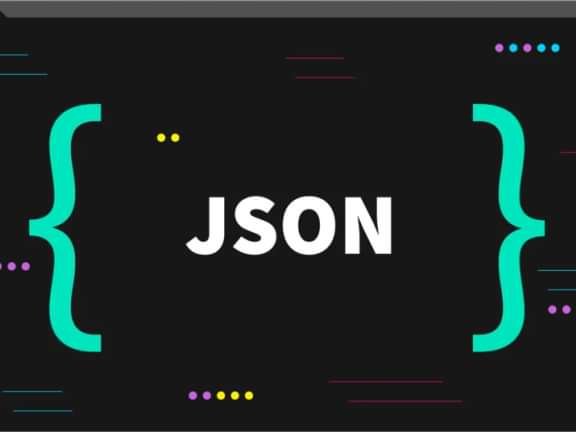Generative Engine Optimization Strategies That Actually Work
Don't keep chasing Google's breadcrumbs. Learn effective AI SEO strategies instead.

Search is continuing to get a serious makeover thanks to AI, and traditional SEO tactics are starting to feel about as relevant as a flip phone at a tech conference. This shift has given rise to generative engine optimization (GEO) strategies, a sophisticated approach where SEO meets the intricacies of machine learning and AI to ensure visibility in AI-powered search engines and Google's intelligent snippets
While everyone's still figuring out how to game Google's latest algorithm update, smart marketers are already preparing for a world where AI-powered search engines don't just crawl and index content, they actually understand it, synthesize it, and serve it up in entirely new ways.
This shift is already here. AI search engines like Perplexity.ai and generative AI tools like chatGPT are reshaping how people discover information, which is making traditional keyword stuffing look like digital archaeology. But, this shouldn’t be seen as discouraging. Rather, this evolution presents massive opportunities for those willing to adapt their content strategy.
The brands that master generative engine optimization now will dominate the search landscape tomorrow.
Understanding Generative AI Search Engine Fundamentals
Your grandfather's SEO playbook just got tossed out the window. While you were busy stuffing keywords like a Thanksgiving turkey, generative AI search engines were quietly revolutionizing how content gets discovered, processed, and served to users.
Traditional search crawlers used to lumber through the web, indexing pages based on keyword matching and link signals. They were essentially playing a giant game of "find the word" with your content.
Large Language Models, however, are more like having a conversation with a particularly well-read librarian who actually understands what you're asking for.
Why is this?
Well, the linchpin here is natural language processing (NLP). Modern AI systems don't just scan for keywords, they comprehend context, interpret meaning, and understand the relationships between concepts.
In fact, Conversational AI platforms like ChatGPT, Bing AI, and Perplexity AI have shifted user behavior from fragmented keyword searches to full, intent-driven questions and dialogue-like exchanges (LinkedIn Editor).
When someone searches for "best practices for remote team management," an AI engine doesn't just match those exact words. It understands they're looking for actionable advice about leading distributed teams, and it can pull relevant information from content that might never have used those precise terms.
This shift from keyword matching to intent understanding means your content needs to think bigger and adopt new generative engine optimization strategies. Instead of optimizing for search engines, you're now optimizing for systems that can actually understand what your content means and whether it genuinely helps users. Context and semantic meaning have become the new kings of the SEO castle, while keyword density has been politely shown the door.
Content Architecture for AI-Powered Search Discovery
Creating content that AI engines love isn't about gaming the system, it's about building something genuinely useful and structurally sound. Think of it as constructing a house that's both beautiful and has excellent bones.
Topic Clusters
Topic clusters have become essential for demonstrating topical authority to AI systems. They are essentially a group of thematically related pages structured around a central, comprehensive page known as a pillar page. The pillar page provides a broad overview of a core topic, while multiple supporting pages, called (you guessed it) cluster pages, delve into specific subtopics related to the main theme.
So, Instead of creating isolated blog posts that exist in content silos, you want to build comprehensive content ecosystems.
Piller Pages
Create pillar pages that cover broad topics thoroughly. The definitive guide on a subject. These are basically the then develop supporting content that dives deep into specific subtopics. This architecture helps AI engines understand that you're not just dabbling in a subject, you're a legitimate authority.
These pages should address the topic from multiple angles, answer common questions, and provide genuine value that keeps visitors engaged for extended periods. They're designed to be bookmark-worthy resources that people return to repeatedly.
Featured Snippets
Featured snippets and AI-generated answer boxes represent prime real estate in search results. To optimize for these, structure your content with clear, concise answers to specific questions. Use bullet points, numbered lists, and well-formatted sections that make it easy for AI to extract and cite your information.
Schema Markup
Schema markup and structured data act like helpful translators between your content and AI engines. They provide context clues that help AI systems understand exactly what your content is about, who created it, when it was published, and how it relates to other information.
When your content includes proper schema markup, AI engines can more accurately surface it for relevant queries, understand its context within your broader content strategy, and potentially feature it in enhanced search results like rich snippets, knowledge panels, or voice assistant responses. It's the difference between shouting into a crowded room versus having a clear, labeled conversation.

Example of a Featured Snippet in Google's AI-Powered Search Results
Semantic Optimization Techniques That Drive Results
As we mentioned, the post-keyword-stuffing era is over, and semantic keyword clusters reign supreme. So, instead of obsessing over exact-match keywords, focus on related terms, synonyms, and concepts that naturally occur when discussing your topic.
So, if you're writing about digital marketing, your content should naturally include terms like "online advertising," "conversion optimization," "customer acquisition," and "brand awareness,” rather than “best digital marketing’, “digital marketing near me”, etc.
The secret sauce lies in answering related questions and covering subtopics comprehensively. AI engines love content that anticipates what users might want to know next. For example, If you're explaining email marketing best practices, also address common challenges, tools, metrics, and implementation strategies. This comprehensive approach signals to AI that your content is a valuable, authoritative resource.
Entity-based SEO has become increasingly important as LLMs get better at understanding relationships between people, places, concepts, and things. Instead of just mentioning "social media marketing," establish clear connections between specific platforms, strategies, tools, and outcomes. Help LLMs understand the full context of your expertise.
Authority Building in the Age of AI Search
Building authority in order to be cited in Google and in LLMs like chatGPT requires a different approach than traditional link-building tactics. These generative engine optimization strategies focus on expertise signals that go beyond simple backlink counts. AI systems are looking for comprehensive, well-researched content that demonstrates deep knowledge and provides genuine value.
Creating citation-worthy content means developing resources that other creators naturally want to reference. This includes original research, comprehensive guides, industry analyses, and thought leadership pieces that offer unique perspectives or insights. The goal is to become a primary source that LLMs recognize and trust.
Comprehensive Guides
These serve as definitive resources on specific topics tend to perform exceptionally well with AI systems. These aren't just long-form content pieces, they're genuinely helpful resources that users bookmark and return to repeatedly.
Think of creating the type of content you'd want to find when researching a topic thoroughly. This will separate the winners from those who just want to lazily post new content hoping to see what sticks.
Strategic Internal Linking
Strategic internal linking also helps demonstrate topical expertise by showing AI engines how your various pieces of content connect and support each other. Create logical pathways between related content pieces, and use descriptive anchor text that helps AI understand the relationship between linked pages.
Industry data and expert consensus suggest that well-executed internal linking can improve a site’s organic traffic by 5–10% (Exploding Topics).
Technical Implementation for Generative Engine Optimization Success
The technical foundation of your website significantly impacts how well AI engines can crawl, understand, and utilize your content. Site speed and user experience aren't just nice-to-haves anymore, they're essential for AI crawler efficiency and user satisfaction.
For example, AI crawlers (you can find a complete list of them on commoncrawl.org), like those used by search engines and generative AI platforms, require websites with robust technical optimization. This includes dynamic rendering, fast load speeds, mobile responsiveness, and a clean, logical site architecture. These elements help AI crawlers efficiently access, interpret, and utilize your content (Overdrive Interactive).
Proper heading structures (H1, H2, H3, etc.) create a clear content hierarchy that helps AI engines understand the organization and importance of different sections. Think of headings as a table of contents that guides both users and AI through your content logically.
Multimodal AI search capabilities mean optimizing images with descriptive alt text and proper file names has become more important than ever. AI engines can now "see" and understand images, so providing context through alt text helps them better comprehend your complete content offering.
XML sitemaps serve as roadmaps for AI engines, helping them understand your site structure and discover new content efficiently. Keep your sitemaps updated and organized to facilitate better crawling and indexing.
Future-Proofing Your Content Strategy for Ai
The only constant in AI search is change, so building flexibility into your content strategy is crucial. Focus on creating evergreen content that provides lasting value rather than chasing every algorithm update. In other words, develop content workflows that can adapt to new AI platforms and search behaviors as they emerge.
Voice search and conversational AI integration are becoming increasingly important. Optimize for natural language queries and question-based searches that reflect how people actually speak rather than how they type.
Structuring content to answer common “who,” “what,” “where,” “when,” and “how” questions increases the likelihood of being selected as a voice search result or featured snippet, which is often the source for voice assistant answers (AWEB Digital)
Most importantly, maintain a measurement framework that tracks your performance across different AI-powered search platforms. Monitor which types of content get featured in AI responses, track referral traffic from various AI engines, and continuously refine your approach based on real performance data.
The future belongs to content creators who understand that AI search engines are partners in connecting valuable information with the people who need it most. So, focus on creating genuinely helpful, well-structured content, and the AI algorithms will likely reward your efforts
The AI Search Cliff: Jump or Get Pushed
The search landscape is experiencing its biggest transformation since Google first crawled the web. Those clinging to outdated SEO tactics are essentially bringing a typewriter to a laptop convention.
Generative engine optimization strategies aren't just about keeping up with change, they're about getting ahead of it. The brands that embrace AI-powered search optimization now will be the ones dominating search results when everyone else is still trying to figure out what happened to their organic traffic.
Start implementing these strategies today, because tomorrow's search dominance is built on today's preparation. Your future self (and your organic traffic) will thank you for making the leap before your competitors even realize there's a cliff coming.
So, the question isn't whether AI will reshape search, it's whether you'll be ready when it does.
Continue reading.
The Element API plugin is a very powerful tool that you can use for quickly exposing your data structures to an external source.
Read moreA brief introduction to consensus mechanisms and why proof of stake is the right move for Ethereum.
Read moreLet's chat about your project
Portland, OR 97215



